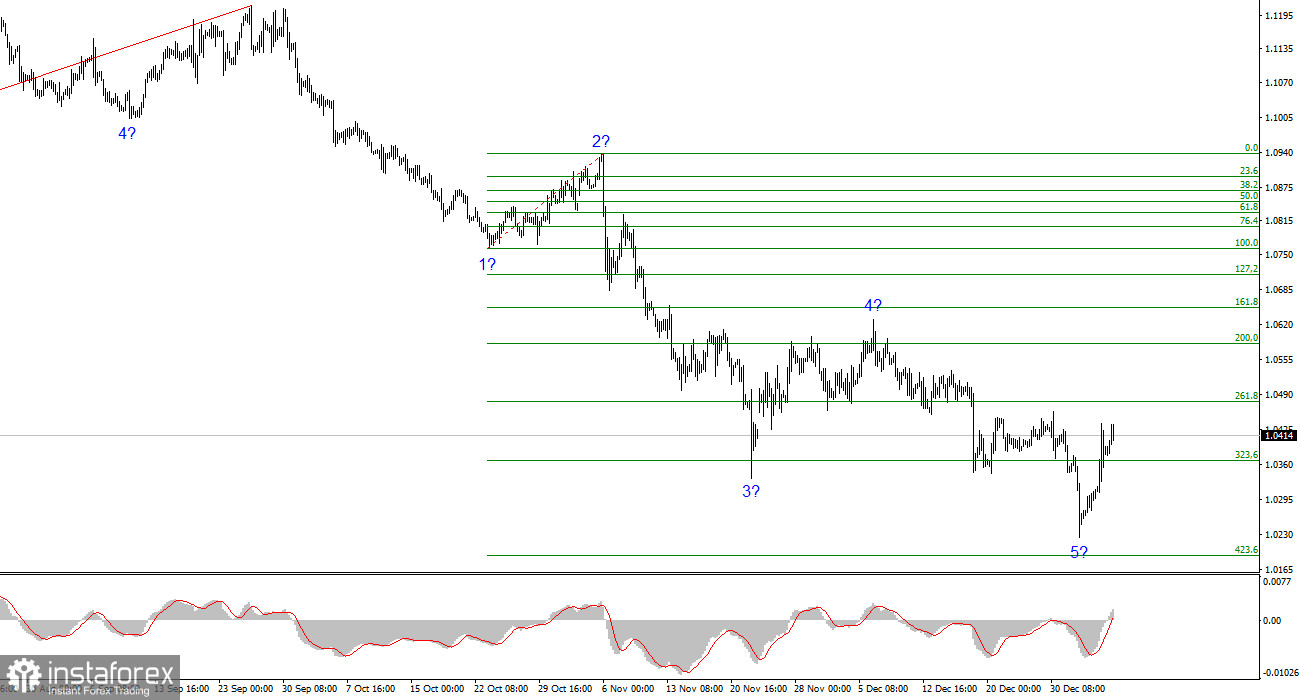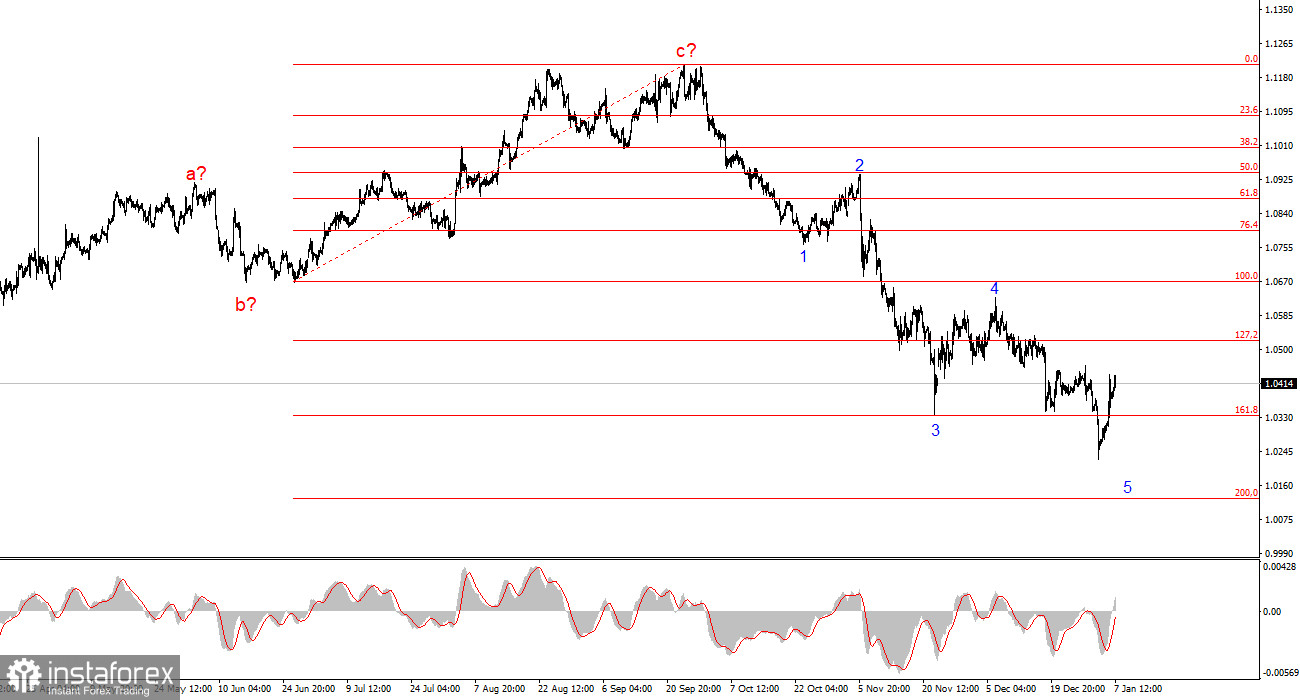
The wave pattern on the 4-hour chart for EUR/USD is becoming increasingly clear. Since September 25, a new downward structure has been forming, which has already taken on an impulsive appearance. The fifth wave, as I expected, has developed convincingly and may now be completed at any moment (or is already complete). This does not necessarily mean it will end immediately, but it does indicate that the current wave structure could conclude on any given day.
In general, the current wave structure leaves no ambiguity. It is clear and straightforward. I would like to remind you that the news background can "mislead" the market for a month, two, or even three, but not indefinitely. Recent reports from the U.S. have shown that the economy is not facing serious challenges. There is no recession, and there won't be one. While the economy may slow, its current growth rate allows it to navigate this period without significant losses. The Federal Reserve will ease its policies more slowly and moderately than the market expected at the beginning of the year. Conversely, the European Central Bank (ECB) sees no reason to halt and will continue easing. As a result, the euro may strengthen in the coming weeks based on wave structure, but a new impulsive downward wave is likely to follow.
The EUR/USD pair rose by 30 basis points on Tuesday. Inflation data from the Eurozone could have dealt another blow to the dollar today, but it failed to do so. After Germany's inflation spiked sharply, many market participants (myself included) expected Eurozone inflation to accelerate beyond forecasts. However, the Consumer Price Index (CPI) came in at 2.4% year-on-year for December, as anticipated. The core CPI was 2.7% year-on-year, also as expected. The unemployment rate stood at 6.3% in November, meeting expectations. If the market had hoped to continue increasing demand for the euro today, the news backdrop undoubtedly disappointed it. Buyers found no new justification for further euro purchases.
Later, two significant reports from the U.S. will be released, so both the euro and the dollar may adjust their positions before the day ends. Notably, for the first time in several weeks, demand for the euro is growing, aligning with my expectations for the conclusion of the downward wave set. I do not anticipate that all U.S. statistics will disappoint this week. I do not foresee the euro climbing above the 1.0700 level. However, over the next few weeks, the euro may have opportunities to strengthen its position, which has been lackluster in recent months.
General Conclusions
Based on the analysis of EUR/USD, I conclude that the pair continues to form a downward trend segment. At this time, this segment appears well-defined and complete. I suggest that the first wave of this trend segment may be finished. Therefore, a three-wave or more complex corrective structure can be expected, within which traders should look for new selling opportunities targeting much lower than the 1.0200 level.
On a broader wave scale, the structure is becoming more complex, consisting predominantly of corrective waves. A new downward wave series is likely, but its length and structure are difficult to predict at this stage.
Key Principles of My Analysis:
- Wave structures should be simple and comprehensible. Complex structures are challenging to trade and often change unpredictably.
- If there is uncertainty about market conditions, it is better to stay out.
- There is never 100% certainty in market direction. Always use Stop Loss orders.
- Wave analysis can be combined with other types of analysis and trading strategies.






















